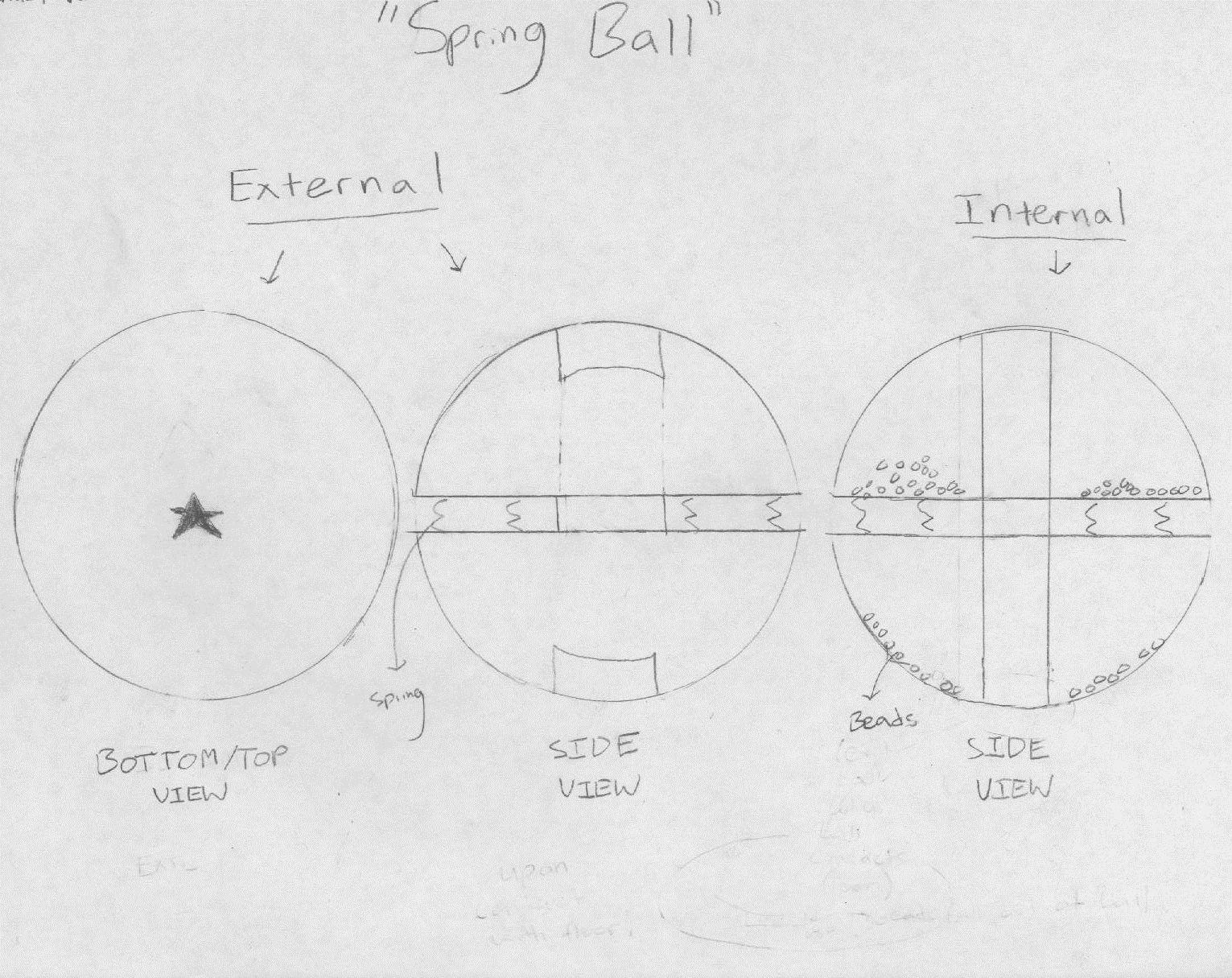

‘Spring ball’ is a bouncy ball that is cut in-half. The two halves are joined together by springs, with a rigid shaft that runs down the middle of the entire ball (see internal view above).
The basic physical principle of this toy is spring force. When the ball bounces on the floor in the correct orientation (see side view above), the springs compress, causing the two halves of the bouncy ball to come together. However, the shaft that runs down the center of the ball remains rigid when the ball bounces, and this creates an opening in the bottom of the ball that causes small pieces of candy to pour out of the ball. Thus, spring ball teaches children about how springs compress due to a normal force.
Children interact with ‘spring ball’ by bouncing it on the floor in the correct orientation, meaning that the ball must be bounced on the floor so that the springs compress. On the bottom of the ball (i.e., the part of the ball that should contact the floor), there is a star that indicates where the ball should hit the floor to make the springs compress. Finally, the toy is fun because it challenges the child to hit a target (the star on the ball), and there is a reward for completing this challenge: candy.
The construction cost of this toy is approximately $5.00. Most of this construction cost comes from manufacturing the ball with a specific orientation of springs through its center. Furthermore, the ball is made of rubber, and the two halves are fastended to the springs by screws. Also, the spring are fairly tight and strong. So, the toy is durable enough to withstand lots of use, though the rubber may wear down on rough surfaces. Lastly, there are no small parts that can come easily undone from this toy, but the toy does pour out small pieces of candy. Children should also be cautious about bouncing the ball around other people to avoid injury. Thus, the toy is meant for children 5 years of age and older.